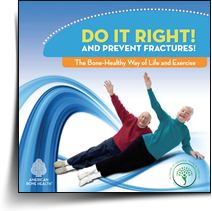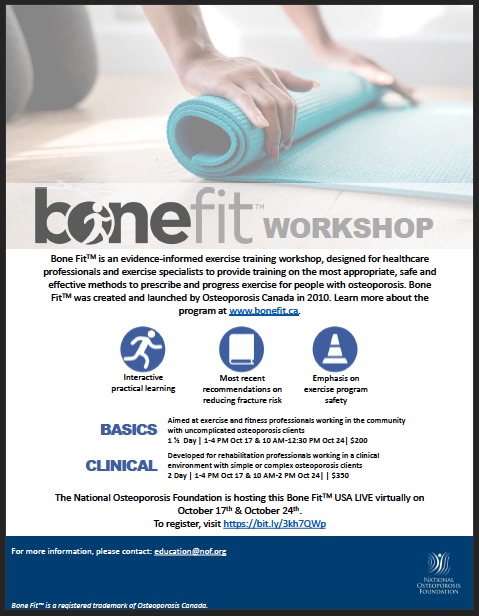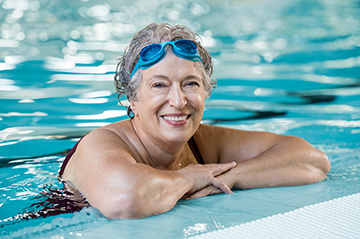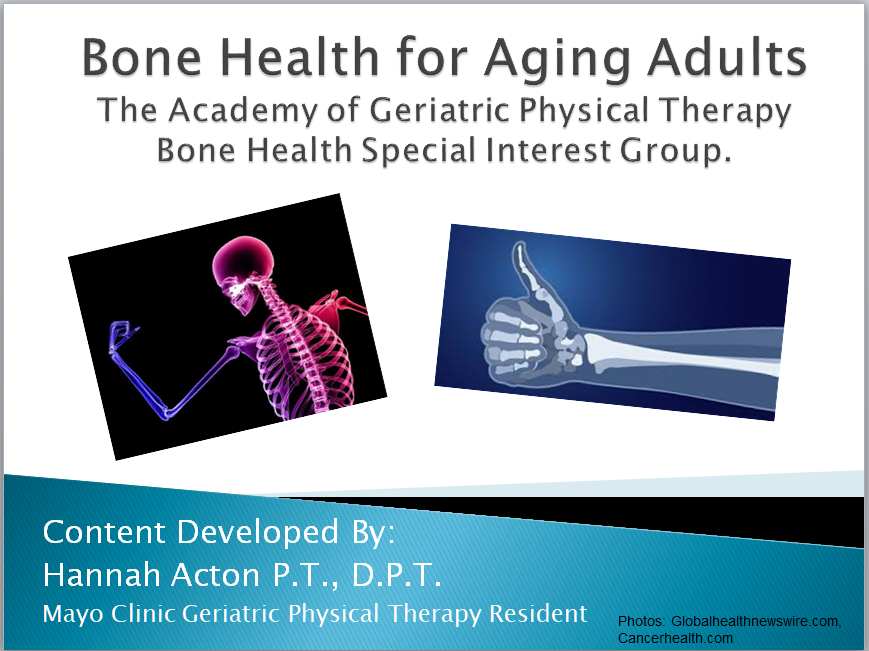
The primary purpose of the Bone Health SIG is to:
- Develop and apply research and knowledge to
- Promote, maintain, and preserve bone health through the life span
- Reduce age-related bone loss
- Reduce fracture risk
- Manage and treat bone loss, osteoporosis and fractures
- Expand understanding of bone and its unique response to mechanical loading and exercise
- Increase public awareness of the role of physical therapy in the promotion of bone- healthy exercise and lifestyle and the management and treatment of bone loss and fracture
- Develop guidelines for successful clinical practice.
- Inform all physical therapy practice to incorporate knowledge of bone into everyday practice and exercise prescription, with emphasis on bone building exercise in youth and safe, non- compressive core and balance exercises for older adults.
Welcome Message
BHSIG Welcome Letter – November 2021
Welcome back to the BHSIG site! Here's some news you need to know.
Election results:
Kathleen Camp is stepping into a new role as Vice Chair in 2022. Kat works at University of North Texas Health Science Center in Fort Worth. She has been serving as Secretary for BHSIG the last 2 years.
Thank you to all who stepped up to run in the election. We value your participation wherever you serve and look forward to your contributions.
Keep track of current events and recent literature on the Bone Health Flash – Lisa Hamilton, SIG Vice Chair has taken on this monthly news in the Bone Health world. If you have contributions please send to Lisa!
We are already planning for the annual SIG Journal Club in January 2022. Mark your calendar for Tuesday, January 18, 2022, 7-8:30 pm (CST). Dr. Wendy Katzman will be sharing the results of her and her colleagues' study, Long-Term Efficacy of Treatment Effects After a Kyphosis Exercise and Posture Training Intervention in Older Community-Dwelling Adults: A Cohort Study. Journal of Geriatric Physical Therapy: July/September2021-Volume44-Issue3. This will be followed by a presentation by Lynne Hughes PT, PhD, Associate Professor UTMB Galveston with applications from her clinical work in hyperkyphosis.
CSM 2022 – Plan now! San Antonio Feb 2-5.
Bone Health topics:
- GR-10642 "Bone Health: Applications for Prevention and Intervention across Practice Specialties" - Nancy Cullinane, Carleen Lindsey, Cynthia Watson and Stephanie Prinster. Fri Feb 4, 2022 at 3-5pm
- GR-10942 "APTA Geriatrics Evidence-Based Guidelines for Osteoporosis" – Keith Avin, Kathryn Roach, Sherri Betz, Carleen Lindsey, Robert Nithman, Greg Hartley. Thurs Feb 3, 2022 at 3-5pm
- GR-10637 "Osteoporosis Screening Tools: GeriEDGE Scoping Review Results" – Kent Irwin, Emma Louise Phillips, Puneet Dhaliwal, Christina Freshman, Michelle Criss. Sat Feb 5, 2022 at 8-10am
APTA Geriatrics Awards Ceremony and Members meeting. Thurs Feb 3, 2022 at 6:30-8:30pm
Volunteers needed: Contact Kathy Brewer ptkkb55@gmail.com
- BONE HEALTH REFERENCES. We are in need of 2-3 volunteers to work on this moving forward to keep it current. If you are in the literature on a regular basis in academia, research or program development, this is the perfect spot for you. Kathy Shipp will provide guidance on this process.
- Step up to be the Student Liaison for BHSIG
Please visit the website often. This is a member resource!
If you have questions, ideas or other contributions – please do not hesitate to contact me.
Thank you for all you do for your patients, your students and our profession!
Kathy Brewer PT, DPT, MEd, CEEAA
Geriatric Certified Specialist
Chair, APTA Geriatrics Bone Health Special Interest Group
Ptkkb55@gmail.com
Bone Health SIG Events
February 2-5, 2022
Bone Health SIG News
Bone Health SIG Member Resources
BoneFit™is an evidence-informed exercise training workshop, designed for exercise practitioners, to provide training on the most appropriate, safe, and effective methods to prescribe and progress exercise for people with osteoporosis.
BONE HEALTH REFERENCES - updated December 2020
Secondary Fracture Prevention - a Multi-stakeholder Coalition Solution for a Current Gap in Treatment
The American Society for Bone and Mineral Research (ASBMR) assembled a multi-stakeholder coalition including representation from the American Physical Therapy Association to develop clinical recommendations for the optimal prevention of secondary fracture among people aged 65 years and older with a hip or vertebral fracture. Review of this document describes essential strategies requiring collaboration within care management teams addressing education, communication and interventions. "Emphasizing the connection between fracture and osteoporosis elevates the fracture from an unfortunate accident to a sentinel event indicative of an important underlying chronic disorder." There is frequent failure to investigate the diagnosis of osteoporosis and provide the long-term integrated care that this chronic condition requires. Following the first fracture it is imperative to initiate immediate interventions to increase the number of patients receiving appropriate osteoporosis treatment. Physical therapists have a long history of successful intervention for acute osteoporotic fractures, but often do not continue care for lifelong management of these patients. Additionally, the medical management across specialties is frequently inconsistent. Given the treatment gap for comprehensive management of this condition, there are predictable complications which will have lifelong impact on function and quality of life. Therefore, physical therapists must actively embrace this call to action. We are vital members of the multidisciplinary team, and with aggressive evidence based approach to encompass the full scope of therapy interventions throughout the lives of these patients, we can fully support the overall strategies presented by the coalition.
Review the full article: Conley RB, Adib G, et al. (2020). "Secondary Fracture Prevention: Consensus Clinical Recommendations from a Multistakeholder Coalition." J Bone Miner Res 35(1): 36-52. PMID: 31538675 DOI: 10.1002/jbmr.3877
Osteoporosis & Aquatic Exercise: New Concepts, Updated Research, Novel Techniques
Community Bone Health Presentation
Why Start A Community Exercise Program
Please watch Sherri Betz, PT DPT, former chair of the BGSIG in this featured podcast.
Stand TallTM DVD
A new Stand TallTM DVD by Wendy Katzman, DSc, PT, OCS has been produced the UCSF Department of Physical Therapy and Rehabilitation Center. To order the video, contact Anthony.Casino@ucsf.edu
What Are Evidence-Based Exercise Programs and Why Are They Important?
Do It RIGHT! and Prevent Fractures!
The Bone-Healthy Way of Life and Exercise
American Bone Health would like to acknowledge the hard work and determination of the author Sherri Betz, PT, GCS, in bringing this important information to the public. We thank the models Jan and Lee Prawitz, Sue Walters and Joan White, who donated their time to show others how to keep their bones fracture free. We recognize and thank Nancy Abodeely, PT, OCS, for reviewing the final content to ensure we communicated safe and effective activities and exercises. American Bone Health is proud to have the endorsement of the Bone Health Special Interest Group of the APTA Geriatrics, American Physical Therapy Association, for this work.
Sherri Betz presentation of the National Osteoporosis Foundation Webinar: Safe Pilates and Yoga for Bone Health now available.
Bone Health Publications
Contact us with contributions to this site as we build resource material and references on Bone Health and Osteoporosis. References will become part of a Resource Guide on Osteoporosis
Bone Health and Fracture Prevention for Older Adults
Adults who are physically active and do regular exercise have less likelihood of experiencing a fracture. The right exercises and good habits can maximize peak bone mass achieved in youth, maintain bone in adult hood, and reduce bone loss related to aging. Both muscle strengthening and weight-bearing exercise can build and maintain a healthy skeleton. Exercise can also preserve strength and stability to reduce falls and spinal stress that result in fractures. Exercise with hand or cuff weights, gym equipment, or elastic tubing stimulates bone and improves muscle strength. The effect on bone is local or specific to the site of the muscles doing the work. Weight bearing exercise is another way to improve bone density and stay fit. Brisk walking, step aerobics, stair climbing, and jumping are examples. Resistance exercise and weight bearing should be done regularly to provide lasting benefits. Exercises that improve muscle strength, core stability, balance and coordination will help prevent falls. Exercises to improve posture or strengthen the "core" protect against spine fractures resulting from stress on weakened bone. Proper posture and safe body mechanics during all activites will protect the spine against the compressive effects of bending and kyphosis, a rounded spine. Kyphosis is associated with a stooped appearance and loss of height. Fractures of the spine are greater in those with kyphosis regardless of whether there is a history of osteoporosis or fracture. The kyphosis can be reduced with exercises that strengthen and lengthen the spine. Postural supports and bracing are helpful for some individuals. If you have osteoporosis, are at high risk for a fall or fracture, or have a medical condition affecting your ability to exercise, do not start an exercise program without first consulting your physician and a physical therapist.
This resource was created by APTA Geriatrics (www.geriatricspt.org) for public education purposes. We encourage distribution and no permissions are necessary.
Bone Health Links of Interest
- Royal Osteoporosis Society
- National Bone Health Alliance/Strong Bones America
- American Orthopedic Association: Own the Bone
- MedBridge Education Osteoporosis Courses
- Osteoporosis Canada
- Too Fit to Fracture Series from Osteoporsosis Canada (Consumer & Professional)
- Video on Physical Therapy and Bone Health: Cynthia Cutright, PT, MBA, DPT, explains how people can maintain good bone health with the help of a physical therapist
- NOF/Pilates Anytime Safe Movement Video Series "Boning Up"
- NOF's Clinician's Guide to Prevention and Treatment of Osteoporosis
- WHO Fracture Risk Assessment Tool
- American Society for Bone and Mineral Research
- International Society for Clinical Densitometry
- International Society of Physical and Rehabilitation Medicine
- Osteogenesis Imperfecta Foundation
- The Paget Foundation
- Bone Health and Osteoporosis: A Report of the Surgeon General
- National Institutes of Health Osteoporosis and Related Bone Diseases National Resource Center
- National Institutes of Health, National Institute of Arthritis and Musculoskeletal and Skin Diseases: Senior Health
- Centers for Disease Control and Prevention: Bone Health Campaign
U.S. Food and Drug Administration - International Osteoporosis Foundation
- Foundation for Osteoporosis Research and Education
- American Bone Health
- National Osteoporosis Foundation
- United States Bone and Joint Decade





